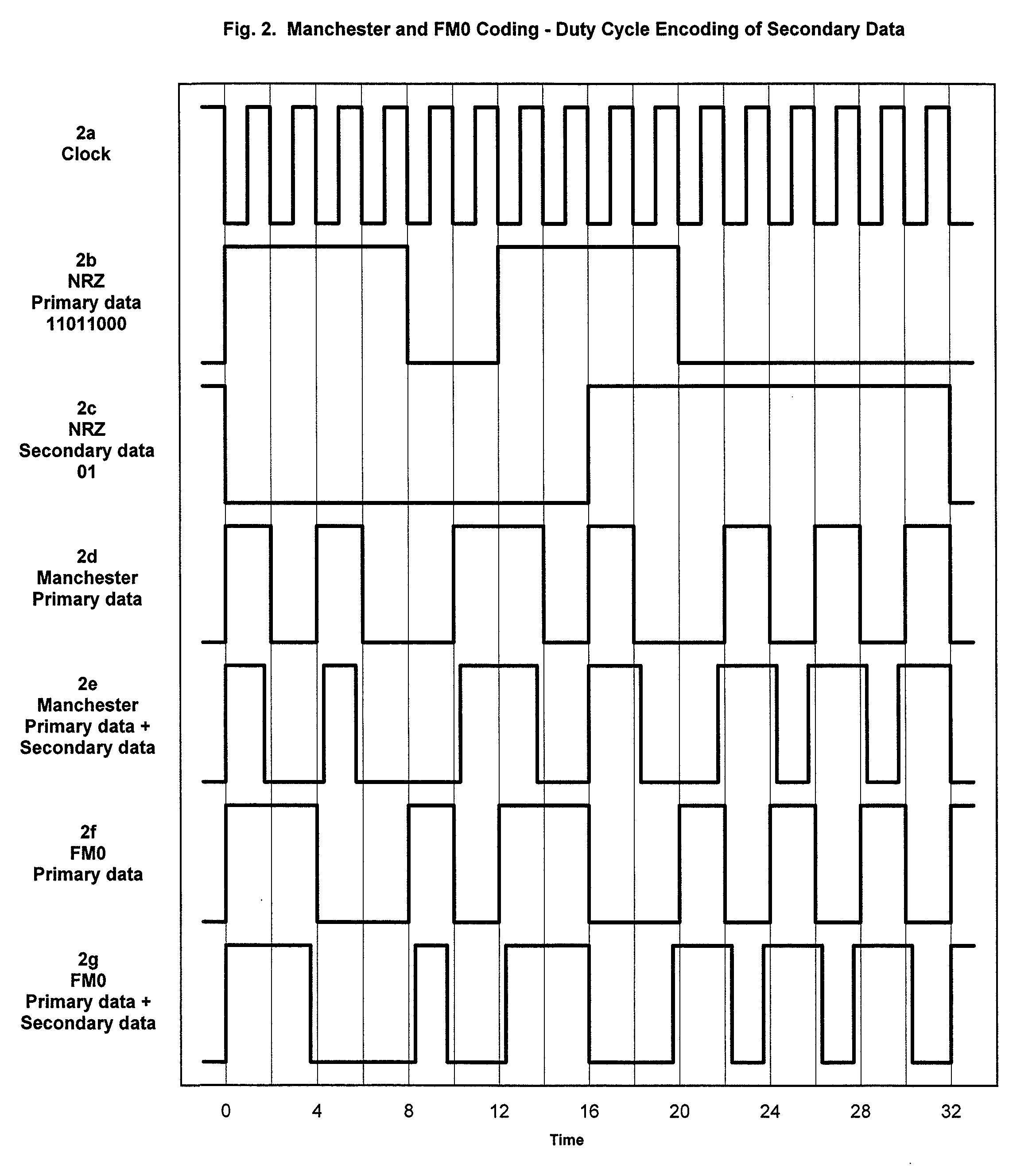Secondary data channels in RFID systems
a technology of second data channels and rfid systems, applied in the field of data communication, can solve the problems of system performance requirements, system downtime, system upgrade problems, etc., and achieve the effect of increasing data throughput, no time, and maintaining throughpu
- Summary
- Abstract
- Description
- Claims
- Application Information
AI Technical Summary
Benefits of technology
Problems solved by technology
Method used
Image
Examples
Embodiment Construction
[0045]An illustrative example of an application of an embodiment of the present invention is shown in FIG. 5. Many RFID applications, including electronic collection of tolls on toll roads, may use short range communications to conduct transactions between tags passing readers at stationary locations. The path 102 taken by tags passing readers is shown in FIG. 5.
[0046]Legacy, or unimproved, readers 104 are placed along the path 102 of the tags. Legacy, or unimproved, tags 108 conduct transactions with legacy readers 104 using the unimproved or legacy messaging protocol labeled A1.
[0047]An improved reader 106 implementing the present invention is located along the path of the tags. The improved reader includes a decoder A2R to decode secondary data transmitted by improved tag 110. As a legacy tag 108 passes improved reader 106, transactions can take place using the legacy protocol A1. Since the legacy tag 108 does not have the capability to encode secondary data, the improved reader ...
PUM
 Login to View More
Login to View More Abstract
Description
Claims
Application Information
 Login to View More
Login to View More - R&D
- Intellectual Property
- Life Sciences
- Materials
- Tech Scout
- Unparalleled Data Quality
- Higher Quality Content
- 60% Fewer Hallucinations
Browse by: Latest US Patents, China's latest patents, Technical Efficacy Thesaurus, Application Domain, Technology Topic, Popular Technical Reports.
© 2025 PatSnap. All rights reserved.Legal|Privacy policy|Modern Slavery Act Transparency Statement|Sitemap|About US| Contact US: help@patsnap.com



